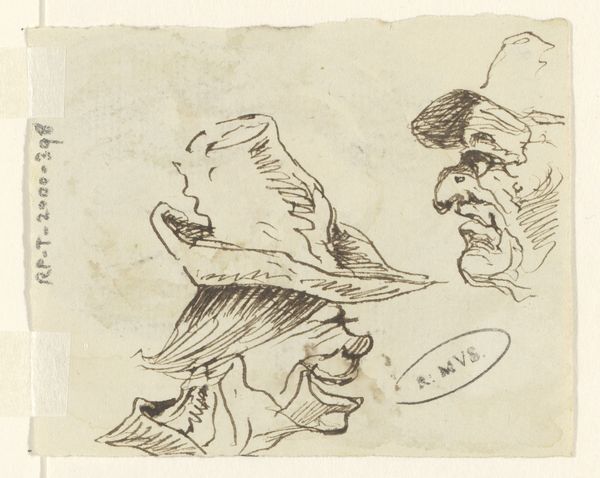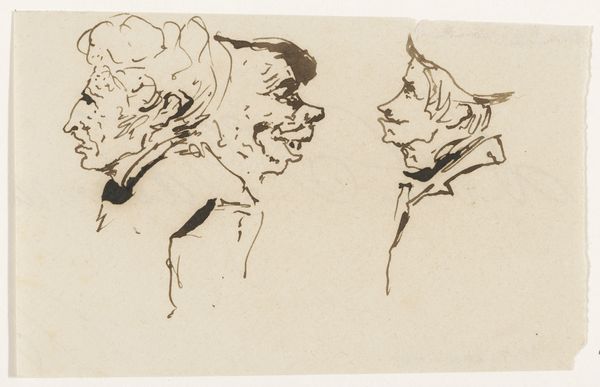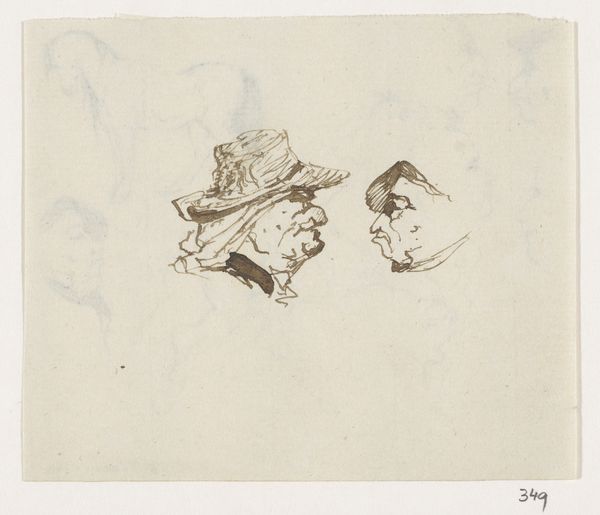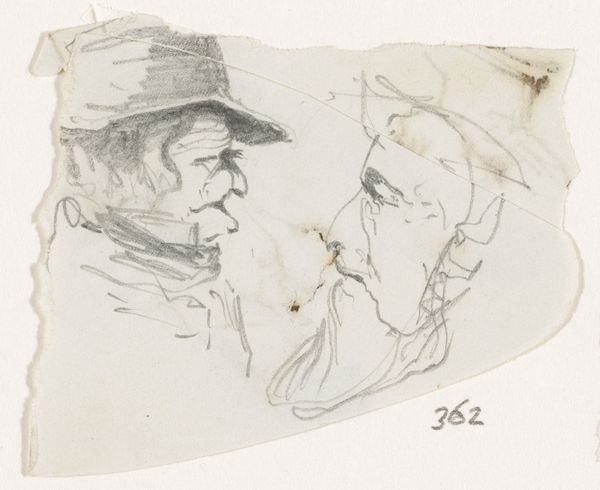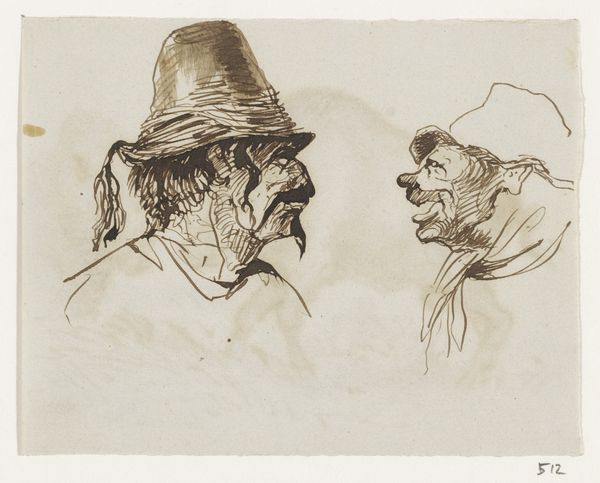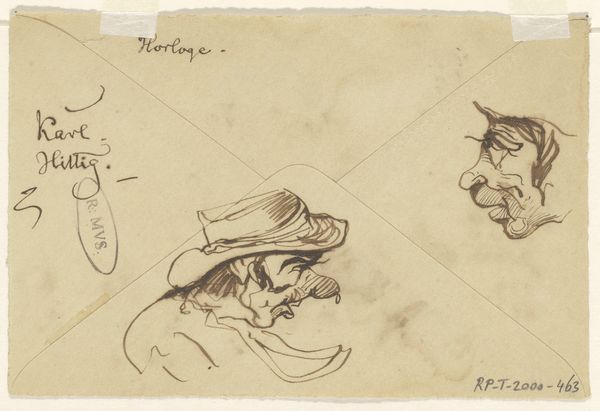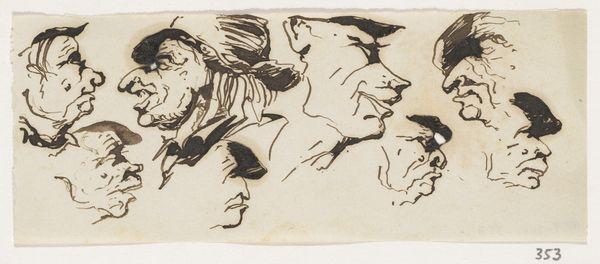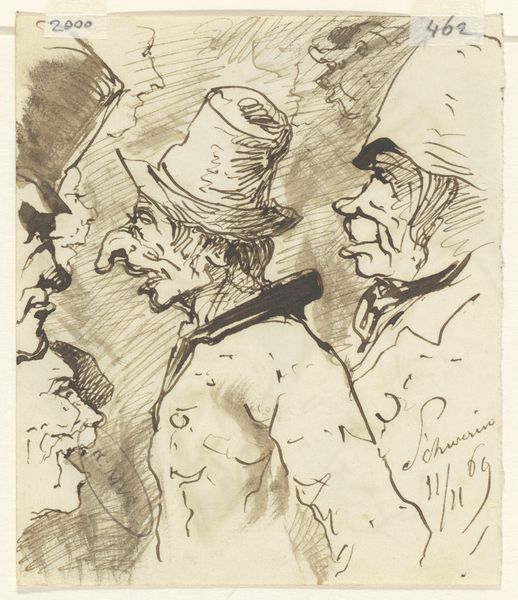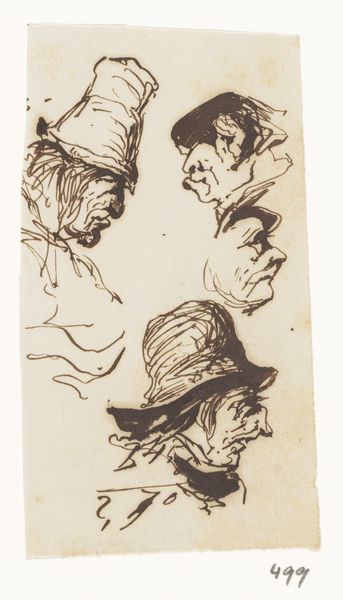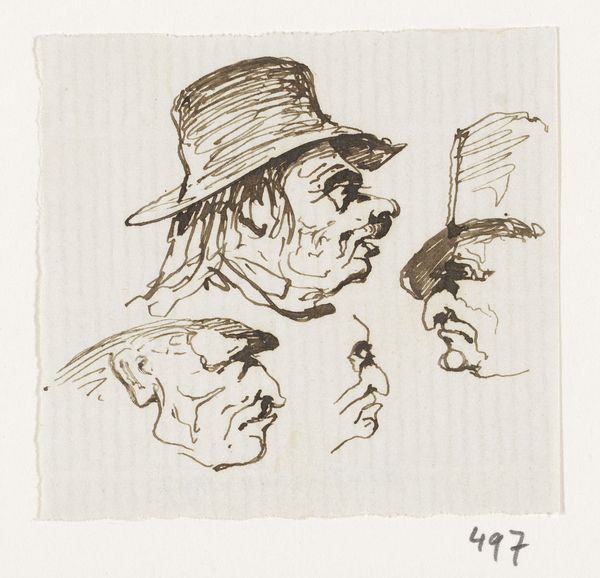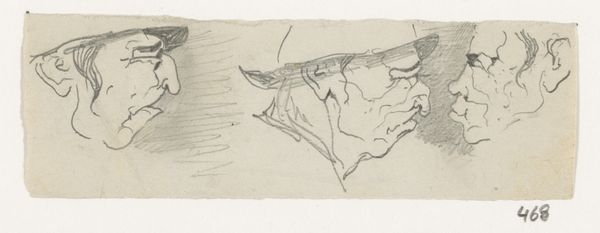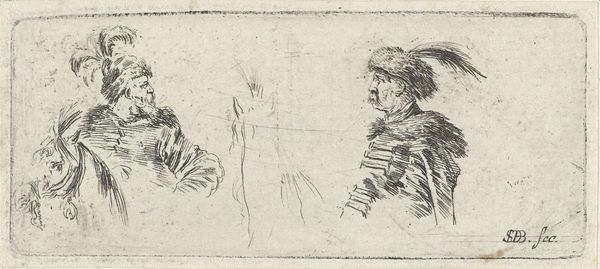
drawing, paper, ink
#
portrait
#
drawing
#
figuration
#
paper
#
ink
#
pen-ink sketch
#
sketchbook drawing
#
genre-painting
Dimensions: height 73 mm, width 104 mm
Copyright: Rijks Museum: Open Domain
Curator: What a wonderfully expressive sketch! Before us is "Drie koppen" – or "Three Heads" – by Johannes Tavenraat, created sometime between 1840 and 1880. It's an ink drawing on paper, currently housed here at the Rijksmuseum. Editor: There’s something quite immediate about this drawing. It feels raw, unfinished almost, as if Tavenraat captured these faces quickly, maybe in a pub or marketplace. I'm curious about the choice of ink – the density shifts creating this dynamic feel. Curator: Indeed! Let’s consider the social context. The mid-19th century saw rapid urbanization, leading to diverse encounters within cities. This piece, with its genre-painting inclination, offers glimpses into the varied social strata and individual stories populating the Netherlands at the time. Editor: It does beg the question of how materials affect interpretation. Ink, so easily transportable, lends itself to these types of quick observations, and likely shapes the overall style. Was it easily obtainable to working-class citizens to make their mark as artists? Curator: Absolutely. Furthermore, the seemingly simple act of drawing everyday people provides a vital intersectional narrative. Consider whose stories were deemed worthy of artistic representation during that period, and then note Tavenraat focusing on what seem like ordinary figures, maybe tradespeople, rather than nobility. How might the choices of focusing on their appearance, with the exaggeration evident in their physiognomy, highlight cultural biases present at the time? Editor: I see your point. Also, given the limitations of drawing in ink, how did he capture the nuanced details in expression and individuality of his models? Could the material have played a key role in popularizing particular stylistic choices across art academies at this period? Curator: That is an excellent question. It raises intriguing avenues to investigate concerning Tavenraat's teaching methodologies, as he was actually the Director of the Stadstekenacademie in Maastricht. Considering those influences and choices in relation to art history makes these sketches ever so relevant. Editor: For me, analyzing these heads primarily comes down to the interplay between process, readily available materials, and social context. This provides rich detail into the everyday lives of those represented in "Three Heads,". Curator: Precisely, and I hope that our perspectives give a wider appreciation for the history and potential meaning found within this intimate study.
Comments
No comments
Be the first to comment and join the conversation on the ultimate creative platform.
